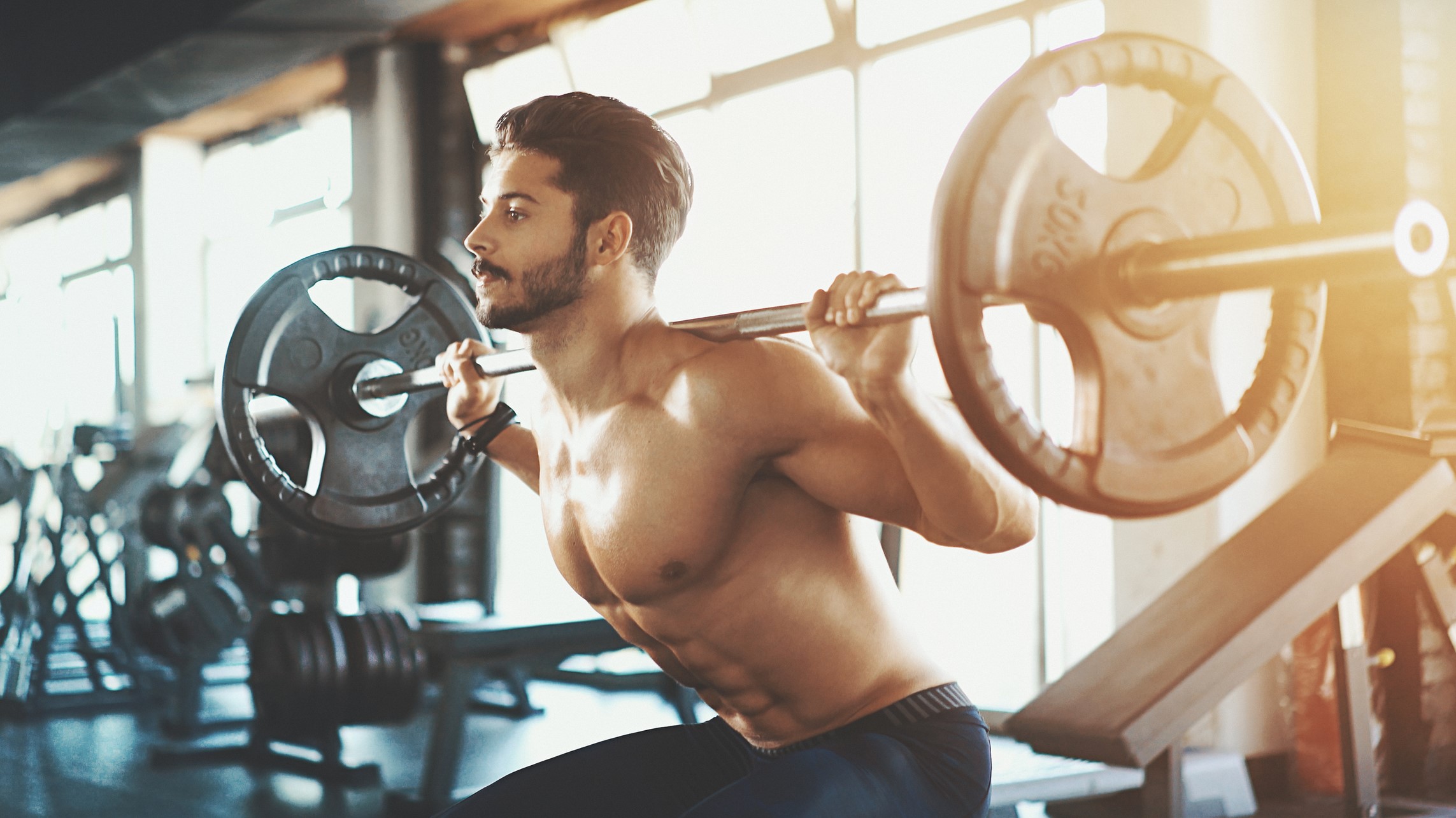

The below push-pull workout focuses on the upper body, mainly your pecs, arms (triceps and biceps), lats, delts and abs. Even better, it is very time efficient: if you keep the timings right, you shouldn't spend more than 30 minutes in the gym doing the session.
Is there a catch? An hour in the gym a week and you'll get big arms and big pecs sound too good to be true? There is no catch. You will have to put the work in yourself, though, and you might want to be mindful of a few other things than just the time spent exercising, but push-pull-legs workouts really are the real deal when it comes to building muscle and gaining mass.
You will need access to a gym or have some equipment at home to do the exercises listed in this push-pull upper body workout, but nothing you can't have or substitute in your home gym. The main items you might need are a weights bench, a barbell with some plates, a pair of dumbbells, a pull-up bar, an ab roller and some thick resistance bands.
What is the benefit of this push pull upper body workout?
First of all, it is very time efficient. We often find it difficult to find time to work out, but with this exercise regime, you will only need to spend one hour in the gym a week out of the total 168 that's available in the week. Also, none of the below exercises is difficult; no need to use equipment you aren't familiar with. Some of them use your body as resistance and can be found on the pro callisthenics workout list. We did say you will have to work for your gains, didn't we?
These exercises can also be tailored to each exercise level, using smaller or larger weights, depending on your skill level. When performing each exercise, choose a weight that you can perform the movement with without failure. No need to double up the weight and half rep the sets, that will not result in gains.
As you go forward with the plan, try adding more volume each time, as detailed in the article about the golden rule to get a six-pack. It doesn't have to be much; try to keep the rep range between 8-12 reps per set and add a little more weight or more reps every time you visit the church of iron.
How to do the two day push pull upper body workout
There are four exercises each day with sets divided as follows: 4-4-2-2. So, of the first two exercises, you do four sets each, and from the latter two, you do two sets each. Rest between sets should be between a minute or two and if you are unsure how much it is, use a fitness smartwatch to time yourself.
Get all the latest news, reviews, deals and buying guides on gorgeous tech, home and active products from the T3 experts
Using a watch is also a good way to keep track of your heart rate. These wearable devices can help you better understand your body's fitness needs, and they can also aid you by keeping track of your progress. The accompanying apps are also super handy, like the Fitbit App or the Garmin Connect, where you can further analyse your performance and receive tips as well.
Try spreading the two days out throughout the week. Do one over the weekend and the other mid-week, but even if you do them on consecutive days, leave 24 hours between the two workouts. If you can, get a training buddy to help you out during your sessions. Not only it's safer to have someone around, but it is also more motivating to work out with someone. Make sure you drink plenty of water during your workouts as well, and always warm up with some light cardio exercises like running or indoor cycling.
Day 1 – Push (pecs and triceps)
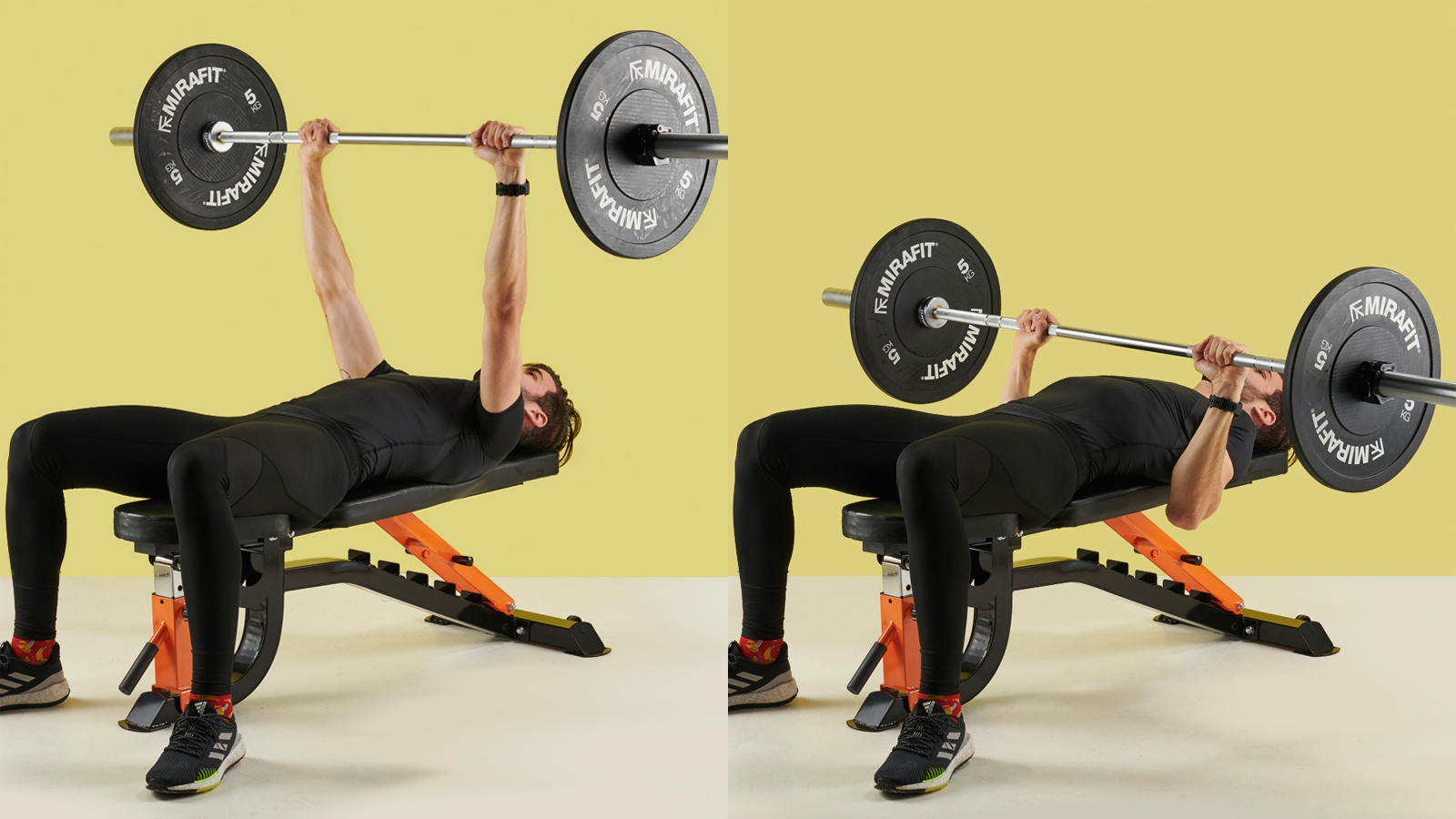
The barbell bench press is a gym staple exercise
Barbell bench press
Sets/Reps: Do 4 sets of 8-12 reps
Muscles worked: pecs, triceps, front delts
How to do bench presses: lay down with your head resting on the bench under the bar, feet on the ground, hands holding the bar with an overhand grip, core engaged. You want your feet to dig into the floor a bit, make sure they are firmly pressed down before you lift.
As you exhale, lift the bar up off the rack and extend your arm fully. Inhale as you lower the bar down to your chest, tucking your elbows in slightly. Come close to the chest as you lower the bar, then as you exhale, press the bar up again.
The best way to activate your pecs is to lower the bar slowly (for roughly 3 seconds) and then press it up hard. The slow negative movement will activate your pecs even more for added gains.
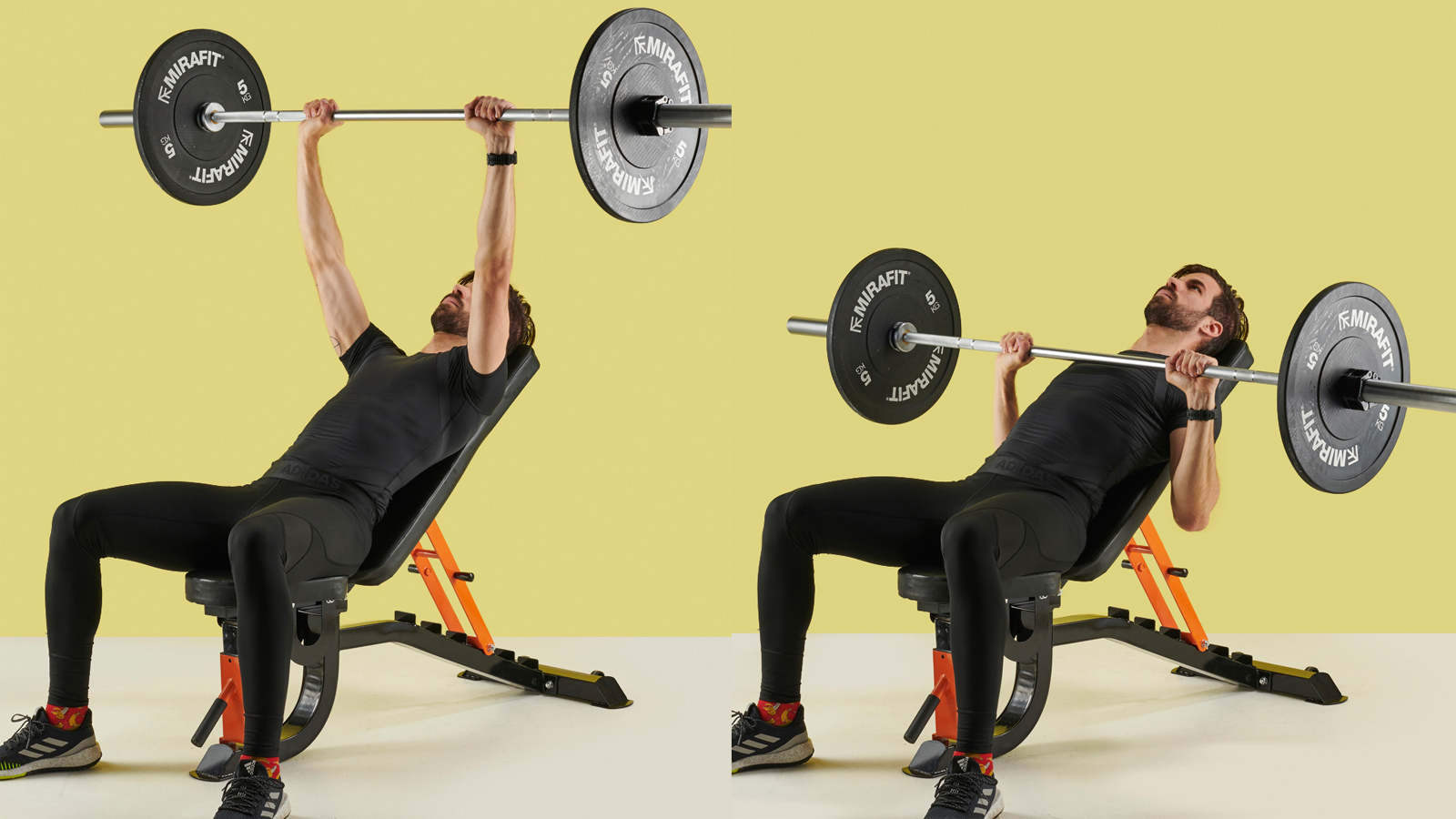
The incline bench press will attack the pecs from a different angle
Incline barbell bench press
Sets/Reps: Do 4 sets of 8-12 reps
Muscles worked: upper chest, delts, triceps
How to do incline bench presses: exactly the same as above, but with the bench angled between 45-60 degrees. The higher the bench, the more it will work the delts so be careful, your delts can lift less than your pecs, so be mindful of that when yo uadjust the bench angle.

Destroy your shoulders with the military press
Military press/ Overhead press
Sets/Reps: Do 2 sets of 8-12 reps
Muscles worked: delts, triceps, traps, upper pecs, core (abs and lower back)
How to do overhead presses: stand with your legs shoulder width apart, shoulders open, barbell loaded and resting on your upper chest, hands gripping the bar slightly wider than shoulder width, core activated.
You would like to push the barbell up over your head in a straight line. Move your head out of the way when it passes in front of it in both directions. The bar's movement is a straight up and down.
Don't lock your elbows in the highest position, your arms should be ever so slightly bent even in the highest position. After your bar has reached its highest point, return it to the starting position.

Roll your way to a strong core and six pack
Ab rollout
Sets/Reps: Do 2 sets of 8-12 reps
Muscles worked: core, including your abs and lower back
How to do ab rollouts: To perform an ab rollout, you go down on all fours with your feet lifted off the ground, so you are on your knees and your hands holding the ab roller/barbell. Then, you gently push the roller/barbell away from you until your nose almost touch the ground. Once there, you pull the roller/barbell back to the original position.
If you mastered this (won't be anytime soon), you can try the standing ab rollout: same as above but with your legs extended. Starting position is a downward facing dog pose with your hands on the roller, then you push the roller away and then back up again. This one requires an unbreakable core so please be extremely careful when trying to perform it.
Day 2 – Pull (lats and biceps)
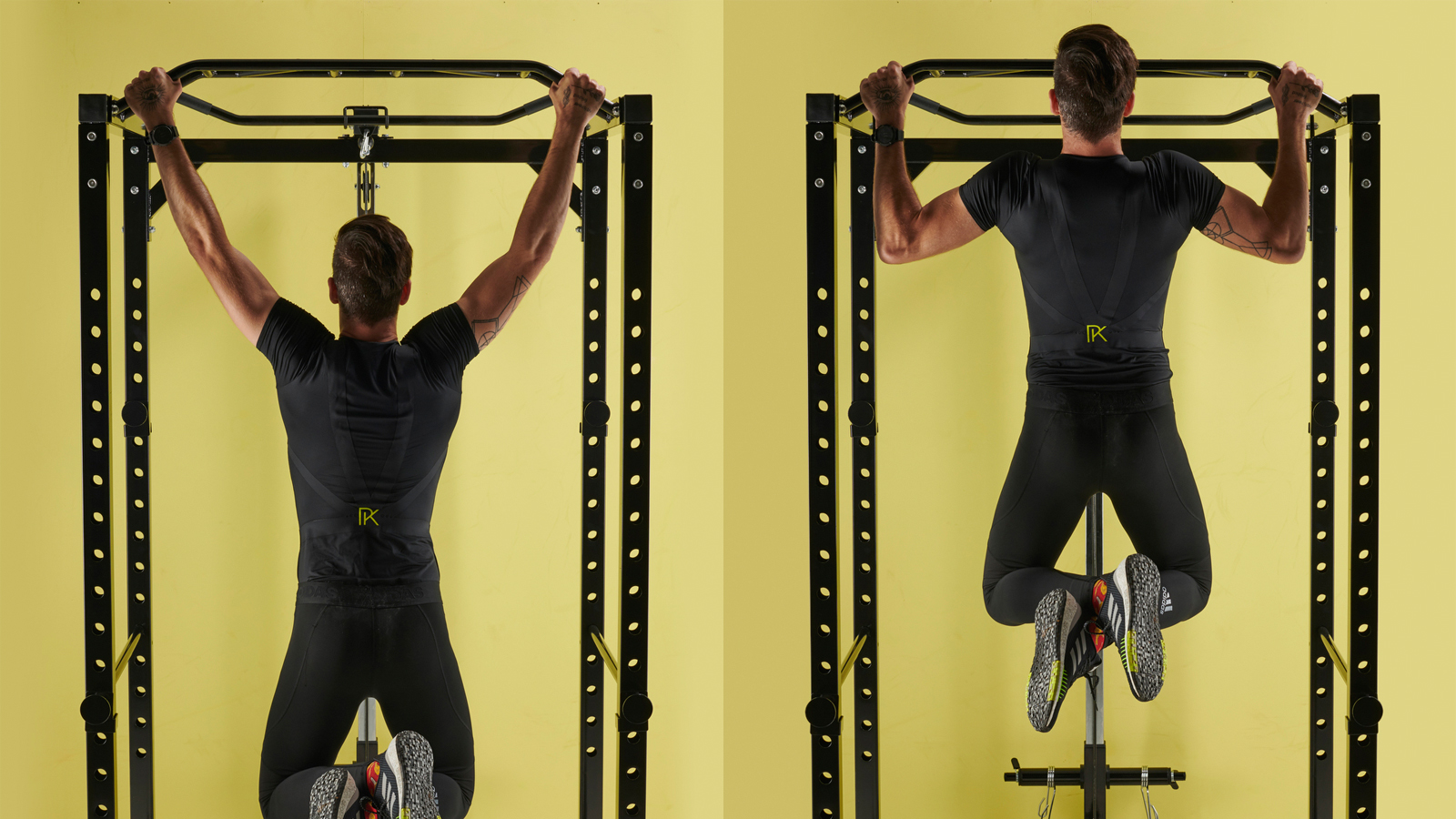
Pullups are one of the best bodyweight exercises you can do
Pullup
Sets/Reps: Do 4 sets of 8 reps
Muscles worked: lats, traps, all your upper back basically, biceps
How to do pullups: There are two key factors to keep in mind about pullups – the depth and the grip.
In the lowest position, don't let your shoulders drop completely. The good thing about pullups is that your arm muscles are engaged all the way through, no rest for the wicked here!
Also, you would like to grab the bar in a wide overhand grip to activate your lats. This is not a chin up after all, the main focus is on working the last.
If you find it difficult to do pullups, you can try doing lat pulldowns until you build up the strength to pull yourself up.
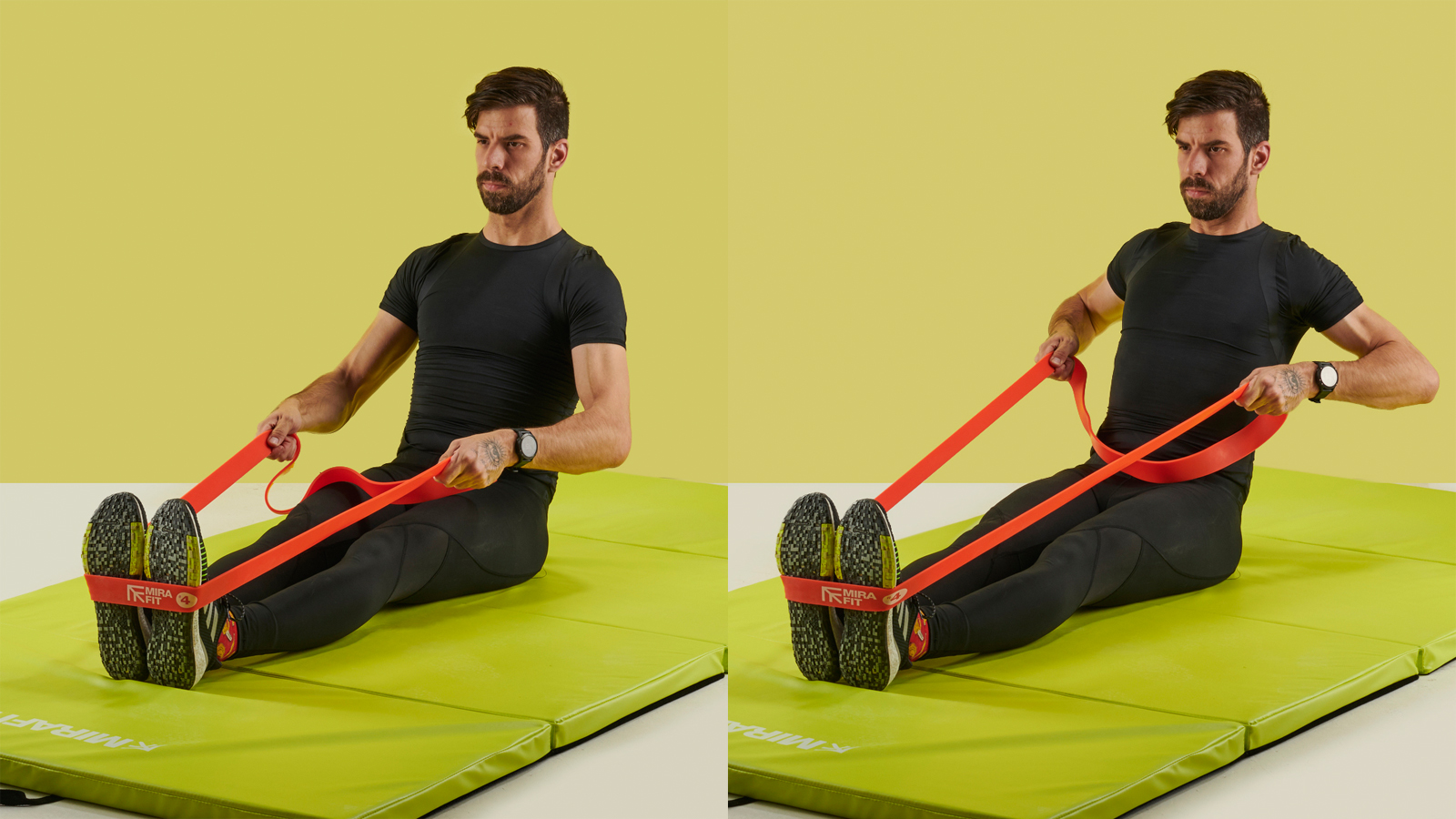
Seated rows can be done on the cable machine or even with a resistance band
Seated row
Sets/Reps: Do 4 sets of 8-12 reps
Muscles worked: lats, biceps, forearms
How to do seated rows: Sit on the bench in front of the cable machine. Grab the little triangular handle and place your feet on the footrests. Pull the handles towards your abdomen, not your chest, slowly and not jerking the cable back and forth.
As you let the handle go forward, don't let your body lean forward too much. You are trying to work your lats and biceps here, no need to rock back and forth as you row. You're not trying to work a WaterRower here.
Your legs are not locked straight, neither is your elbow when your arms are fully extended, both are ever so slightly bent. Be careful when you let go of the handle at the end of each set.

Shoulder exercises are not reserved for push days only, as the upright row demonstrates
Sets/Reps: Do 2 sets of 8-12 reps
Muscles worked: upper traps, deltoids and biceps
How to do an upright row: With your feet shoulder width apart, lift the barbell up so it is resting in your extended arms in front of your quads. Your shoulders are open and your core engaged.
Your hands should be in an overhand drip position and near each other. One way measure the distance between them is to extend your thumbs toward each other when holding the bar and when they meet, that's roughly the distance your hands should be.
Pull the barbell up towards your chin as far as it feels comfortable. Don't try to twist your elbows in unnatural position just to touch your chin with the elbows; your shoulders can only go so high in this position. Also, by lifting the bar too high, you also risk twisting your wrists in positions it shouldn't be in.
Let the barbell down gently into the starting position. Again, the movement should be slow and you should concentrate on muscle activation.
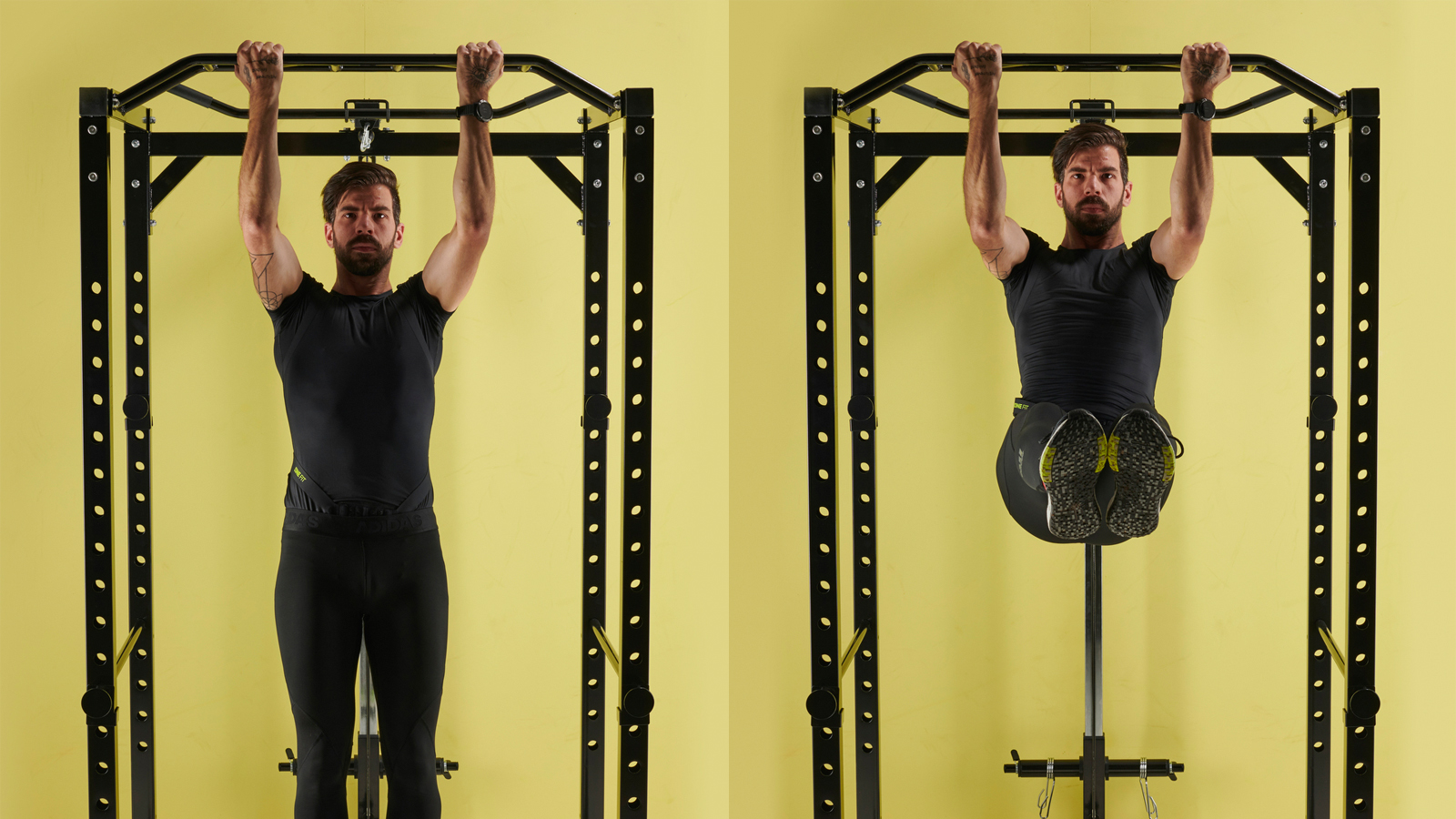
Hanging leg raises are not easy to master but will give you a proper abs workout to remember
Sets/Reps: do 2 sets of 8 reps
Muscles worked: abs, core, biceps
Abs exercise doesn't get much harder than this. We already covered hanging leg raises and dubbed it the hardest abs exercise for a good reason. It's up there with ab rollouts, but in all honestly, ab rollouts have nothing on hanging leg raises.
The hanging leg raise is pretty self explanatory exercise, but a couple things worth mentioning nevertheless.
Try to raise and lower your legs slowly as you perform hanging leg raises. Not only will this activate the muscles for longer, it will also help you not to swing. It's not called swinging leg raises, after all.
Also, in order to work your biceps a bit more and help you stabilise your body more efficiently, you can bend your elbows in a 90 degree angle. Like how you would have them if you were performing a chin up and stopped halfway.
Alternative workouts to try out
If you are a time millionaire, feel free to work out each muscle groups individually.
We have workouts of all sorts here at T3, including chest routines and biceps and triceps workouts (plus shoulders exercises). too. You can also give some much deserved love to your glutes and quads with a leg day workout or perform a killer six pack routine as well. Oh, don't forget to check out best back exercises piece either!
If you only planning on working out once a week, you still have multiple options to do so. If you access to weights (either at a gym or home), you can do the BIG 5, five exercises that give you a comprehensive full body workout. Doing these will make you bigger AND stronger in no time.
If you haven't got access to gym equipment (or can't justify the membership fee for a gym), you can perform a bodyweight exercises at home. Should you have a few resistance bands laying around at home, try our resistance band workout which can work all your muscles surprisingly well.
There is also the Spartan Race workout, a full-body workout to get you ready for this challenging obstacle race. Or, you know, you can just take it as a good full-body workout as is.

Matt Kollat is a journalist and content creator who works for T3.com and its magazine counterpart as an Active Editor. His areas of expertise include wearables, drones, fitness equipment, nutrition and outdoor gear. He joined T3 in 2019. His byline appears in several publications, including Techradar and Fit&Well, and more. Matt also collaborated with other content creators (e.g. Garage Gym Reviews) and judged many awards, such as the European Specialist Sports Nutrition Alliance's ESSNawards. When he isn't working out, running or cycling, you'll find him roaming the countryside and trying out new podcasting and content creation equipment.